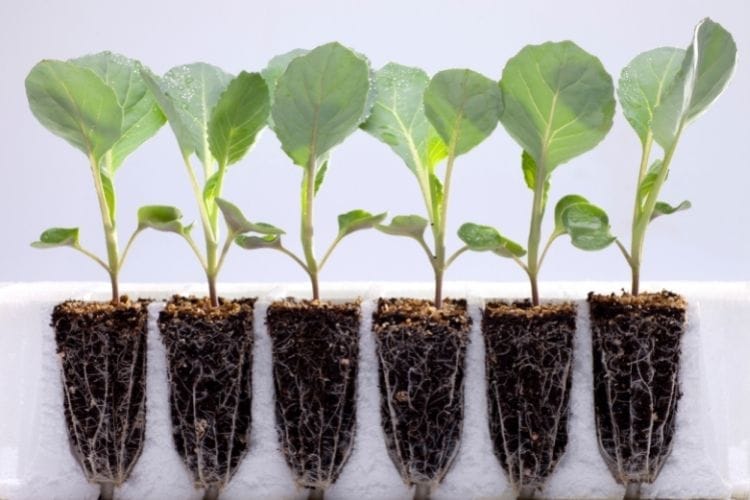1. What is a new plant variety?
According to the UPOV (International Union for the Protection of New Varieties of Plant) Convention , a plant variety is a group of plants belonging to only one lowest botanical classification level, regardless of whether the plant variety fully meets the requirements. whether or not to have plant variety copyright recognized. This crop group must:
i) Determined by the expression of characteristics obtained from known genotypes or combinations of genotypes;
ii) Distinguishable from any other group of plants by the expression of at least one of the known characteristics;
iii) Considered a unit in terms of its ability to remain unchanged during plant breeding.
Thus, a plant variety fully meets recognized standards, not a separate definition for plant varieties eligible for protection. Therefore, a variety must be identified by characteristics that are clearly and specifically expressed through the trait description when being granted a protection certificate. There is also the view that it is only necessary to use molecular biological technology methods to distinguish the differences between varieties without needing testing to describe the varieties registered for protection. However, it is necessary to distinguish the concept of “determination”.
Vietnamese law introduces the following concepts:
– Plant varieties include complete seedlings, propagation materials, harvesting materials of plant varieties of agricultural, forestry, aquatic plants, and newly selected or discovered and developed mushroom species. from a plant species on the List of protected plant species;
– The holder of a plant variety protection certificate is an organization or individual who is granted a certificate of protection of rights to a plant variety;
– Propagation materials are plant parts capable of developing into a complete plant such as: seeds, spores, stems, roots, seedlings, grafted branches, grafted nodes, grafted plants, mycelium, tubers, fruits, buds, flowers, tissues, cells or other parts of plants;
– Propagation material is a complete plant or any part of a plant obtained from cultivating propagating material of a plant variety;
– The detailed description of a plant variety is a document that shows the characteristics of a plant variety according to the rules for testing distinctness, uniformity and stability and is confirmed by the plant variety protection agency. . A detailed description is considered published when released to the public in the form of: scientific reports, newsletters, newspapers, magazines or other publications;
– The plant variety protection agency in this Decree is the Plant Variety Protection Office located at the Ministry of Agriculture and Rural Development;
– Legal representatives of foreign organizations and individuals registering for plant variety protection in Vietnam are organizations and individuals including Vietnamese citizens, foreign organizations and individuals with production and business establishments. business or have a permanent residence address in Vietnam in accordance with the law of the Socialist Republic of Vietnam, and are authorized in writing by the organization or individual that owns the plant variety registered for protection to carry out the registration. protect rights to plant varieties;
– A plant variety author is a person who directly performs all or part of the work of selecting, creating or discovering and developing new plant varieties;
– A country that has signed an agreement on the protection of plant variety rights with Vietnam is understood to be any country that has signed a bilateral agreement with Vietnam or a country belonging to an intergovernmental organization in the case of Vietnam. Sign an agreement with an intergovernmental organization on the protection of plant variety rights.

2. Protection of plant varieties
Plant variety protection (protection of rights to plant varieties) is a form of intellectual property that gives the owner (or author) of a plant variety the exclusive right to exploit the plant variety so that the right owner can conditions for recovering the costs of investing in breeding or discovering and developing new plant varieties. Recovering the owner’s (or author’s) costs can be by self-exploitation (the exclusive right to produce seeds for sale) or by allowing others to exploit and then collecting royalties from the exploiter. Thanks to this mechanism, the owner can reinvest in research and selection or the discovery and development of the next new plant variety and thus create more plant varieties for production.
According to the UPOV Convention, plant variety owners include organizations and individuals in one of the following cases:
(1) Directly select, create or discover and develop new plant varieties at your own expense;
(2) Investment in breeding or discovering and developing new plant varieties;
(3) Legally inheriting rights to plant varieties from others. Owner of rights to plant varieties: For some research facilities using state budget, the owner of rights to plant varieties belongs to the state. For companies, it depends on the employee hiring contract between the company and the author working in the company. Rights to plant varieties are also given to people who ” discover or develop new plant varieties”, meaning that a person who only discovers a plant variety and then registers it for protection is not eligible to be granted rights. After discovering this person needs to develop plant varieties. Testing requires effort, time and necessary costs, so the phrase “discovery and development” represents the two activities required to obtain plant variety rights.
3. Meaning of plant variety protection
Plant variety protection has the following meanings:
– Support the conservation and increase of plant genetic resource diversity;
– Increase the number of authors participating in selecting, creating and developing new plant varieties;
– The State reduces investment in plant breeding research and creation, allowing it to focus on investment in basic research;
– Select and create varieties linked to the market;
– Seed quality in production is maintained;
– Opportunity to receive investment in seed production;
– Producers have the opportunity to access good varieties.




